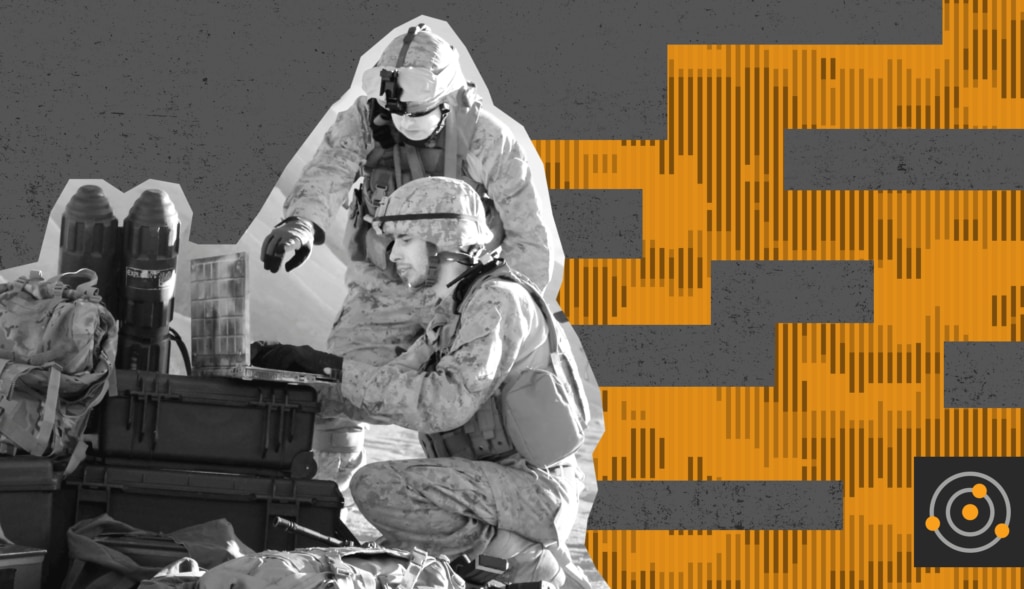With the U.S. national security plan highlighting the need for both information dominance and protection, the Department of Defense is considering plans like modernizing military networks to ensure more effective communications between warfighters and allies in the harshest of environments and recruiting the specialized talent required for battlefield domination.
To begin, the DoD must bridge the gap between its ambitious vision and the capabilities of current military networks. The
Army’s ESB-E, for example, seeks to replace the 15-year-old WIN-T tactical network with a modern, scalable, and adaptable network to help ensure field troops are constantly connected with each other and their allied force counterparts.
Cybersecurity needs to be at the forefront of these plans. It will be incumbent on warfighters in the field to monitor, manage, and secure the network to fulfill the “protection” portion of the DoD’s strategy.
Let’s look at how the DoD can strengthen its security posture by protecting critical systems, improving compliance, and enhancing the performance of its networks, applications, and staff.
Delivering an Edge to Troops in the Field
Success has become increasingly dependent on the use of connected devices and the application of technologies such as artificial intelligence. Through the
internet of battlefield things (IoBT), as the Army Research Laboratory calls it, U.S. troops are gleaning more intelligence from cloud and edge computing-based sensors, wearables, cameras, robotics, and field equipment.
The DoD is investing heavily in IoBT systems to provide warfighters with a strategic and tactical advantage. The Navy, for example, is planning to link its global fleet through connected platforms while the Army intends to network soldiers and their weapons systems. Meanwhile, all military departments want to ensure field troops can use satellite communications technologies as easily and naturally as they use smartphones in their personal lives.
Despite its many benefits, the increased use of networking and communications technologies at the edge comes at a cost: it vastly expands potential attack surfaces. The more connection points there are, the greater the threat of exposure. To protect themselves, armed forces must be prepared to monitor, maintain, and secure communications systems significantly different and more complex than traditional IT networks.
Matching Training and Development Plans to New Battlefield Requirements
As communications networks evolve from the legacy systems in place for years, the delineation between soldiers and system administrators is beginning to blur. To manage these cultural and technological changes, the DoD needs to rethink its approach to training. First, it should ensure troops understand they have a new role to play; they must now take both personal and collective responsibility for protecting the network instead of leaving it to someone else. Second, the DoD must ensure field troops have the knowledge and skills to monitor and maintain the different battlefield systems and to identify and address unfolding problems to ensure the systems’ security and continuity.
That’s not to say all traditional teachings should be scrapped. For example, data and traffic will still need to be encrypted; device harboring sensitive information or access points protected—and clear network visibility is still required to pinpoint and resolve any anomalies.
Increasing Bench Strength Where it Counts
Having the right personnel to support the development, rollout, and ongoing management of next-generation communications systems is another priority for the DoD.
Currently they lack bench strength in some areas of emerging importance. These include
cybersecurity, where the small number of experts retained at present are being rapidly lured away by the private sector. The DoD must act urgently to close this gap.
The White House’s
National Cyber Strategy offers potentially helpful, timely guidance, including the reskilling of workers from other disciplines, recruitment of new talent, and adherence to the
National Initiative for Cybersecurity Education (NICE) Framework. NICE provides a standardized approach for identifying, hiring, developing, and retaining a talented cybersecurity workforce.
Conclusion
American dominance of air, land, sea, and cyberspace rests on two major imperatives for the DoD. The first is the creation of secure, interconnected battlefield systems from which U.S. forces can enjoy a strategic and tactical advantage. The second is the recruitment of skilled talent to monitor, manage, and protect the growing expanse of systems required to protect troops against determined adversaries. Both are critical for the future of U.S. defense systems.
Find the full article on GCN. 






